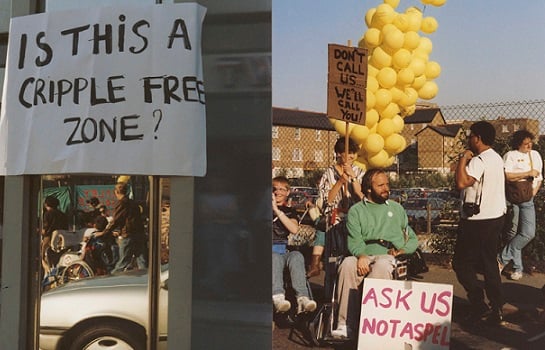
1990 'Block Telethon' protest outside London Weekend Television (LTV) studios
Photo: Liz Crow, NDACA
New £1m archive of UK’s disability arts opens to public
The online National Disability Arts Collection and Archive is billed as the first archive in the world to offer a major retrospective of disabled people’s art and activism.
A new £1m digital archive recording the legacy of disability arts in the UK has opened to the public.
3,500 images, educational resources, oral histories and articles are available on the National Disability Arts Collection and Archive (NDACA), which is run by disability arts organisation Shape Arts, with support from the Heritage Lottery Fund and the Joseph Rowntree Foundation.
“The Archive and Collection preserves the legacy of disability arts, allowing future generations of disabled people to celebrate the creative and political artefacts of disability,” a spokesperson for Shape Arts said.
“Researchers, heritage professionals and those interested in the UK’s cultural identity will be able to share and study ephemera about disability arts and analyse how the Disability Arts Movement impacted the campaign for disabled people’s civil rights.”
NDACA has digitised items including photos, ephemera, theatre stills and t-shirt collections, telling the story of disability arts from 1968 to the present day. It claims to be the first archive in the world to offer a major retrospective of disabled people’s art and activism.
Commenting on the archive, Stuart Hobley, Head of HLF London, said: “NDACA is a major milestone for disability heritage; stories of ordinary people who led extraordinary lives. Challenging and triumphant, we can now all learn about the contribution of the disabled community to the UK’s arts and political landscape.”
Jocelyn Dodd, Director of the Research Centre for Museums and Galleries, added: “This resource will enable museums, galleries and researchers to access untold stories about disabled people’s creativity and the oppression they battled against, and will also empower new audiences to discover the ideas and themes of forty years of disability arts history.”
The archive will have a month-long exhibition in London in August and will be permanently accessible in new research facilities at Buckinghamshire New University.
Join the Discussion
You must be logged in to post a comment.